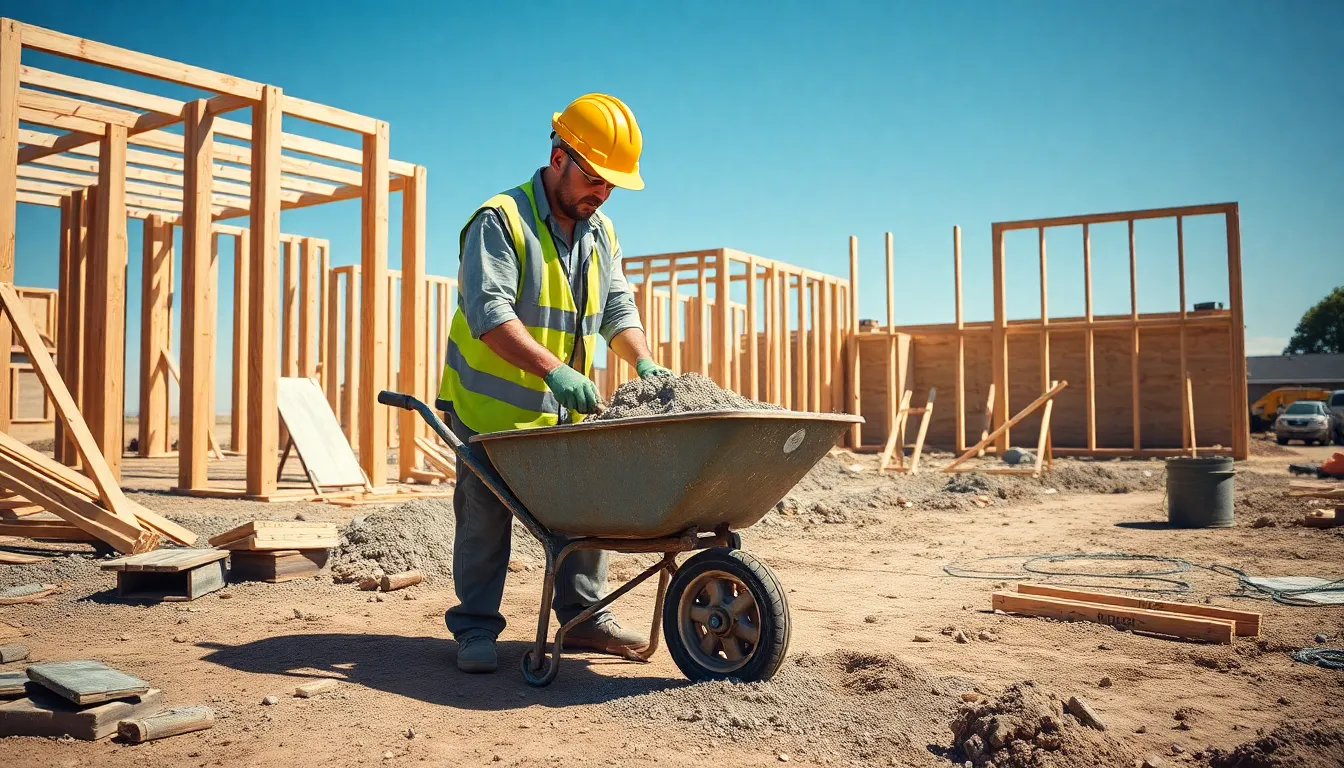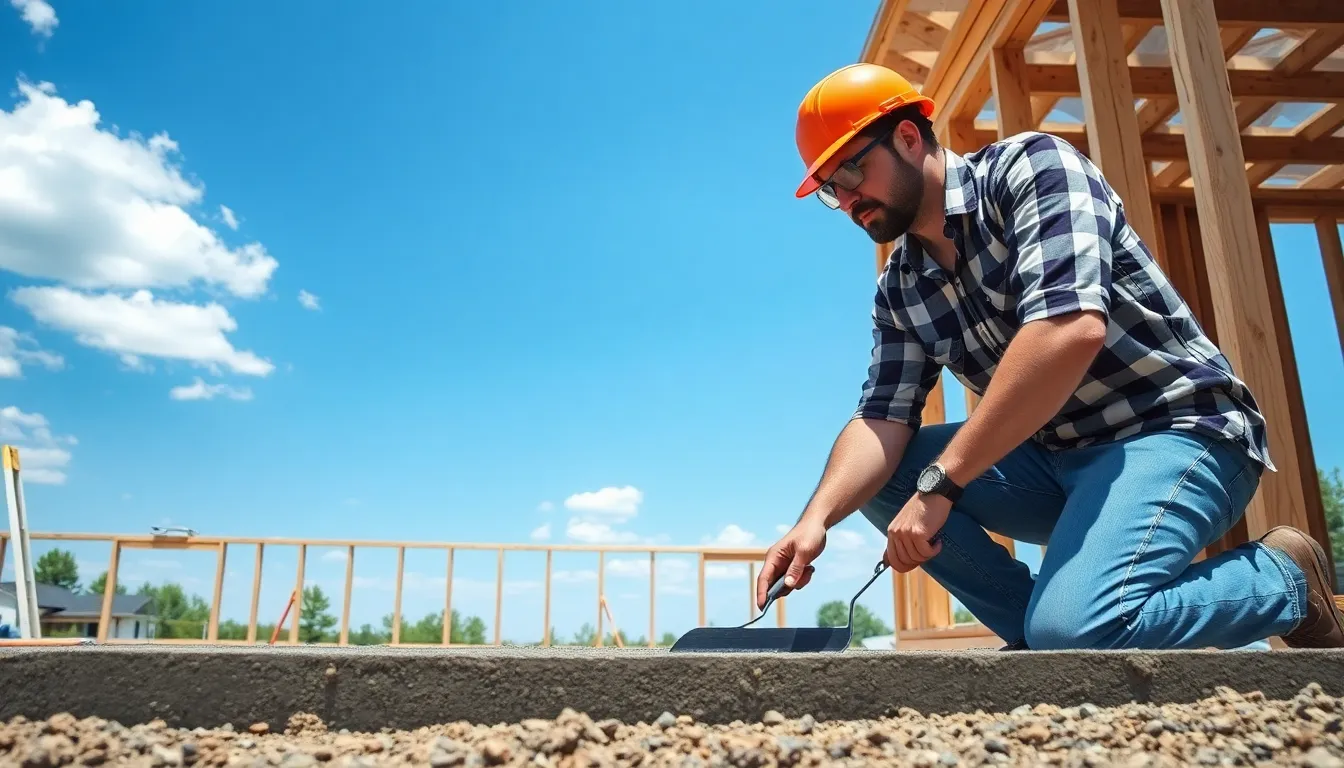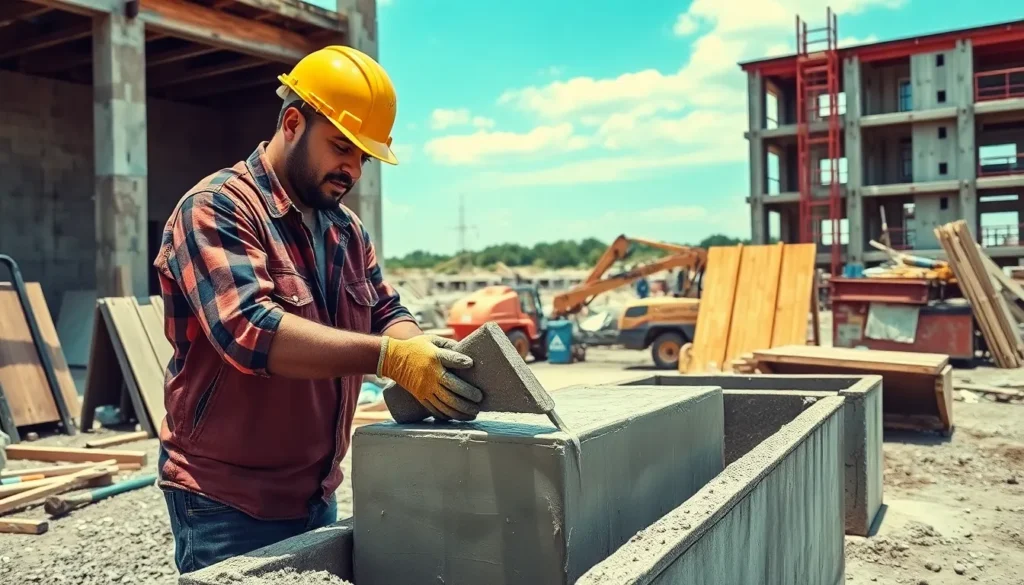Table of Contents
ToggleWhen it comes to concrete, patience isn’t just a virtue—it’s a necessity. If you’ve ever tried to rush a concrete job, you know it’s like trying to teach a cat to fetch: it just doesn’t happen. Concrete setting times can feel like an eternity, but understanding the science behind it can save you from future headaches and a lot of unnecessary waiting.
Understanding Concrete Setting
Concrete setting involves a chemical reaction known as hydration, where water mixes with cement to initiate hardening. This process doesn’t occur instantaneously; various factors influence timing.
What Is Concrete Setting?
Concrete setting refers to the transition from a fluid mix to a hardened material. Initially, the mixture remains workable; however, once hydration begins, it starts to firm up. This phase typically lasts from several hours to a couple of days depending on environmental conditions and mix design. As time progresses, concrete gains strength but remains vulnerable to damage until fully cured. Understanding this concept is vital for proper application and finishing.
Importance of Setting Time
Setting time is critical for several reasons. Adequate time allows the concrete to achieve the right consistency and strengthens durability. Rushing into finishing or additional layers can lead to cracking or peeling. Accurate setting time management ensures safety and quality, impacting long-term performance. Recognizing these factors helps avoid frustration and enables efficient project planning, reducing future delays. Proper adherence to setting guidelines leads to superior results, enhancing overall project satisfaction.
Factors Affecting Concrete Setting Time


Concrete setting time varies due to several key factors. Understanding these elements ensures better project planning and results.
Temperature and Weather Conditions
Concrete reacts sensitively to temperature changes. High temperatures accelerate the setting process, while low temperatures can significantly slow it down. At temperatures above 70°F, concrete may set within a few hours. Conversely, colder conditions can extend setting times to days. Moreover, rain or wind can introduce variables that affect hydration rates, leading to potential weakening if not managed properly.
Humidity Levels
Humidity plays a critical role in the curing process of concrete. Higher humidity levels can slow down evaporation, promoting a more even cure. Low humidity, however, causes rapid moisture loss, leading to surface cracking and compromised strength. When humidity levels are above 50%, concrete typically sets more reliably, whereas drier conditions necessitate additional water retention measures.
Type of Concrete Mix
The chosen concrete mix directly affects setting time. Standard mixes, which include cement, water, and aggregate, typically set within a few hours. Specialty mixes such as quick-setting concrete can reduce this time, allowing for applications in rapid repairs. In contrast, high-performance mixes may require longer periods to reach optimal strength. Evaluating the project requirements helps in selecting the most suitable concrete mix.
Typical Setting Times for Concrete
Concrete setting times vary significantly based on several factors. Understanding these times helps in planning projects effectively.
Initial Set vs Final Set
Initial set refers to the point when concrete begins to harden and can no longer be molded. Typically, this occurs within 1 to 4 hours after pouring, depending on conditions like temperature and mix design. Final set takes longer, occurring roughly 24 to 48 hours after mixing. Once this phase is reached, the concrete can support some weight but hasn’t achieved full strength yet. Recognizing these phases aids in timing tasks like finishing and form removal.
Common Setting Times for Different Applications
Common applications of concrete entail varying setting times. For sidewalks, typical setting times range from 24 to 48 hours for initial set, while full curing may take up to 28 days. Driveways tend to require similar timelines, but heavier traffic areas may call for extended support times. For foundations, initial set occurs in roughly 12 to 24 hours, with final strength realized in 28 days. Fast-setting concrete mixes often reduce these times, achieving initial set in as little as 30 minutes, allowing for quicker project turnover. Understanding these application-specific times aids in proper scheduling and resource allocation.
Tips to Optimize Concrete Setting
Concrete setting involves crucial elements that can impact the final quality. Prioritizing the right practices ensures optimal outcomes.
Recommended Practices
Maintaining a consistent temperature around the concrete enhances the setting process. Ensuring that the area remains shaded during hot weather prevents excessive moisture evaporation. Using high-quality materials can improve strength and durability. Creating a proper mix ratio adds to the effectiveness of the concrete. Keeping the surface moist can further aid hydration, especially during the initial curing period. Allowing sufficient time for each stage of setting is vital; rushing leads to cracking and instability in the structure.
Tools and Techniques
Utilizing temperature-controlled blankets can maintain warmth in cooler conditions, promoting quicker hydration. Employing moisture-retaining coverings helps in maintaining ideal curing conditions, especially in dry climates. Implementing concrete admixtures can optimize setting times, allowing for adjustments in various environmental conditions. Using a concrete vibrator enhances compaction, reducing air pockets that can weaken the structure. Observing local weather forecasts assists in planning the concrete pour at the most favorable times. Monitoring hydration levels ensures the concrete remains adequately moist throughout the curing phase.




